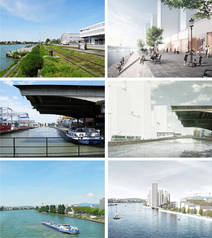5
Spatial Planning
Creates Quality of Life
Kindly supported by Cinémathèque suisse.
Place: Basel
Interviews: Thomas Waltert, Building Department Canton Basel-Stadt
Fritz Schumacher, Master Mason, City of Basel
The task of spatial planning is to ensure that everyone is afforded a suitable living space. This can only happen if both public authorities and private construction companies assume mutual responsibility for the residential environment and maintain a philosophy of building as a whole.
Good livability offers affordable, light, and well-equipped apartments. However, the surroundings are also crucial. Most of us want a neighborhood with low levels of noise and traffic, a lot of green spaces, and public areas where we can meet other people. We value a local area whose design enables us to quickly and safely travel to work, school and the shops, and return home after an evening visit to the movies.
Livable settlements can only arise when all three areas - the building itself, transport connections and design of surrounding spaces - are adapted to our needs. In order to create livable settlements, we also need private landowners and real estate developers to take on responsibility for the design of open spaces, that is to say roads, plazas and green areas, and think beyond their development's borders.
The establishment of building zones and construction of infrastructure means private landowners benefit more and make profit. But it is the public authorities that spend a great deal of money on efficient design of the road network and plazas, as well as appealing connections to public transport. Therefore, fairness demands that in future not only private investors should profit, while the public pays. A part of the land value gain resulting from public planning should be used for the design of city districts and to compensate for losses due to rezoning.


